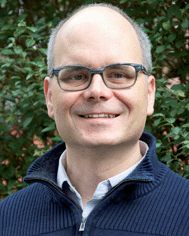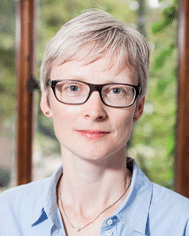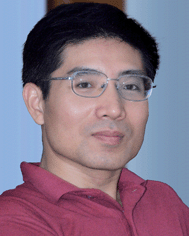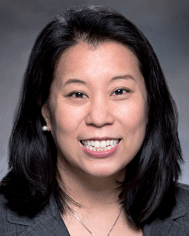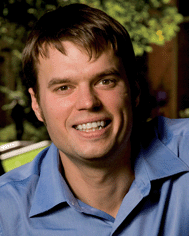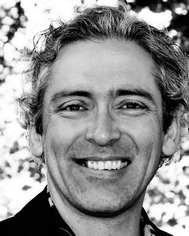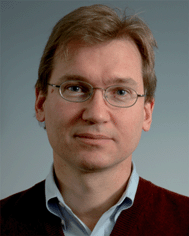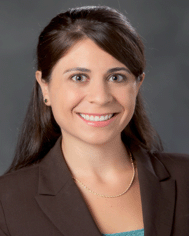Meet the Editorial Board
Kristopher McNeill, Editor-in-Chief
ETH Zürich, Switzerland
Kristopher McNeill is Professor of Environmental Chemistry at ETH Zürich since 2009. He received his BA in Chemistry from Reed College in 1992 and his PhD in Chemistry from the University of California at Berkeley in 1997. As a PhD student, he studied organometallic chemistry with Professors Robert G. Bergman and Richard A. Andersen. Dr McNeill then worked as a postdoctoral researcher with Prof. Philip Gschwend at the Massachusetts Institute of Technology from 1997 to 1999 studying the environmental chemistry of a benzene-polluted lake near Woburn, MA. Dr McNeill started as an Assistant Professor of Chemistry at the University of Minnesota in January 2000 and was promoted to Associate Professor with tenure in 2006. His research group studies environmentally important chemical reactions in natural waters. In particular, his group focuses on the catalytic and photocatalytic degradation of pollutants in aquatic systems.
Marianne Glasius, Associate Editor
Aarhus University, Denmark
Marianne Glasius is Associate Professor in the Department of Chemistry at Aarhus University, Denmark (since 2006), where she is also affiliated with the Interdisciplinary Nanoscience Center and the Arctic Research Centre. She received her PhD in Chemistry from University of Southern Denmark in 2000. During her studies she stayed at the European Commission's Joint Research Centre, Ispra, Italy, for a year. Dr Glasius was a scientist and senior scientist at the National Environmental Research Institute, Denmark for six years. Recently, she visited University of California, Berkeley for one year, working with Prof. A. H. Goldstein at the Dept of Environmental Science, Policy and Management. The research of Dr Glasius focuses on development and application of advanced chemical analyses for identification and characterization of organic compounds in complex matrices. The aim is to obtain understanding of processes whether these involve atmospheric aerosols affecting air pollution and climate, or development of bio-fuels of the future.
Liang-Hong Guo, Associate Editor
Research Centre for Eco-Environmental Science, CAS, China
Dr Liang-Hong Guo obtained his D. Phil. degree from the University of Oxford, UK, after three years' thesis work on bioelectrochemistry and enzyme biosensors under the supervision of Prof. H. Allen O. Hill. He then moved to USA and carried out post-doctoral research work with Prof. George McLendon at the University of Rochester in the field of surface chemistry and interfacial electron transfer kinetics. In 2004, he joined the Research Center for Eco-Environmental Sciences, the Chinese Academy of Sciences as a professor and group leader in Environmental Bio-analytical Chemistry. His current research interests include novel bio-analytical methods, biosensors and biochips for environmental monitoring and toxicity testing, and environmental molecular toxicology.
Heileen (Helen) Hsu-Kim, Associate Editor
Duke University, USA
Heileen (Helen) Hsu-Kim is the Yoh Family Associate Professor of Environmental Engineering at Duke University. Her expertise areas include aquatic geochemistry, biogeochemistry of metal pollutants in the environment, and nanogeoscience. Ongoing research activities in Dr Hsu-Kim's group include studies on mercury biogeochemistry and remediation, mineral–microbe interactions, the disposal implications and reuse opportunities for coal ash, and the environmental impacts of nanotechnology.
Edward Kolodziej, Associate Editor
University of Washington, USA
Ed Kolodziej began his academic studies with a BS in Chemical Engineering from The Johns Hopkins University (1998), after which he focused on environmental issues and went to the University of California at Berkeley where he received his MS (1999) and PhD (2004) in Environmental Engineering. He came to the University of Washington in 2014 as part of the UW Freshwater Science Initiative after seven years as faculty at the University of Nevada, Reno. He holds a joint appointment with Interdisciplinary Arts and Sciences at UW Tacoma and the Department of Civil and Environmental Engineering at UW Seattle, and is affiliated with local and regional water quality efforts through The Center for Urban Waters in Tacoma, WA. Ed's interests include water quality and contaminant fate in natural and engineered systems, especially focusing on interdisciplinary approaches to complex environmental issues affecting water and ecosystem health. Primarily, he works at the nexus of water, chemicals, and fish to understand the impacts of chemical discharges on ecosystem health, although he also manages a number of diverse research projects focusing on environmental chemicals. His research group works to characterize and control non-point source pollution, understand attenuation mechanisms in natural systems, and optimize engineered systems for trace contaminant removal.
Matthew MacLeod, Associate Editor
Stockholm University, Sweden
Matthew MacLeod holds a Bachelor of Science degree in Chemistry from the University of Victoria (British Columbia, Canada), and a PhD in Environmental Chemistry from Trent University (Ontario, Canada). He was a post-doctoral fellow at the Lawrence Berkeley National Laboratory in Berkeley, California, USA, and a Research Group Leader at the Swiss Federal Institute of Technology (ETH) in Zürich, Switzerland. Since 2010 he has been a faculty member at Stockholm University, Sweden. Prof. MacLeod's research interests include the fate, exposure and effects of persistent organic pollutants (POPs), modeling chemical pollutants, and environmental impacts of micro- and macro-plastics.
Paul Tratnyek, Associate Editor
Oregon Health & Science University, USA
Dr Paul G. Tratnyek is currently Professor, and Associate Head, in the Division of Environmental and Biomolecular Systems (EBS) and Institute of Environmental Health (IEH), at the Oregon Health & Science University (OHSU). He received his PhD in Applied Chemistry from the Colorado School of Mines (CSM) in 1987; served as a National Research Council Postdoctoral Fellow at the U.S. Environmental Protection Agency Laboratory in Athens, GA (ERD-Athens), during 1988; and as a Research Associate at the Swiss Federal Institute for Water Resources and Water Pollution Control (EAWAG) from 1989 to 1991. His research concerns the physico-chemical processes that control the fate and effects of environmental substances, including minerals, metals (for remediation), organics (as contaminants), and nanoparticles (for remediation, as contaminants, and in biomedical applications). Dr Tratnyek is best known for his work on the degradation of groundwater contaminants with zero-valent metals, but his interests extend to all aspects of contaminant reduction and oxidation (redox) in all aquatic media. Some of his recent work emphasizes the fate/remediation of emerging contaminants (
e.g., nanoparticles and 1,2,3-trichloropropane).
Desirée Plata, Editorial Board Member
Yale University, USA
Desirée Plata's research seeks to maximize technology's benefit to society while minimizing undesirable environmental impacts in industrially important practices through the use of geochemical tools and chemical mechanistic insights. Plata earned her doctoral degree in Chemical Oceanography and Environmental Chemistry from the MIT/Woods Hole Oceanographic Institution's Joint Program in Oceanography and her bachelor's degree in Chemistry from Union College in Schenectady, NY. Plata is a National Academy of Engineers Frontiers of Engineering Fellow, a two-time National Academy of Sciences Kavli Frontiers of Science Fellow, and an NSF CAREER Award recipient. Plata is currently Assistant Professor of Chemical and Environmental Engineering at Yale University and Associate Director for Research at the Center for Green Chemistry and Green Engineering at Yale.
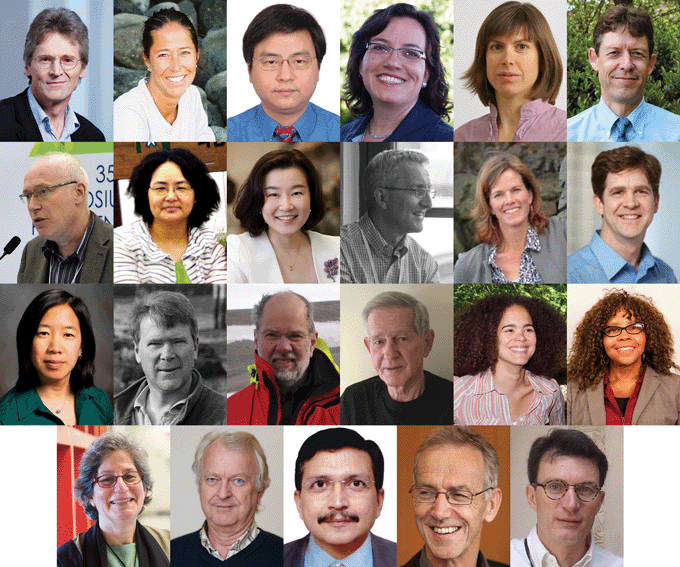 |
| | Fig. 1 Advisory Board members (from left to right; row 1: Urs Baltensperger, Alexandria Boehm, Junji Cao, Beate Escher, Kathrin Fenner, Philip Gschwend; row 2: Stuart Harrad, Jianying Hu, Young-Shin Jun, Andreas Kappler, Karen Kidd, Ruben Kretzschmar; row 3: Linsey Marr, Stephen Mudge, Derek Muir, Evert Nieboer, Jasquelin Peña, Nora Savage; row 4: Susan Solomon, Yngvar Thomassen, Sachi Tripathi, David Waite, Frank Wania). | |
|
| This journal is © The Royal Society of Chemistry 2017 |
Click here to see how this site uses Cookies. View our privacy policy here. 
